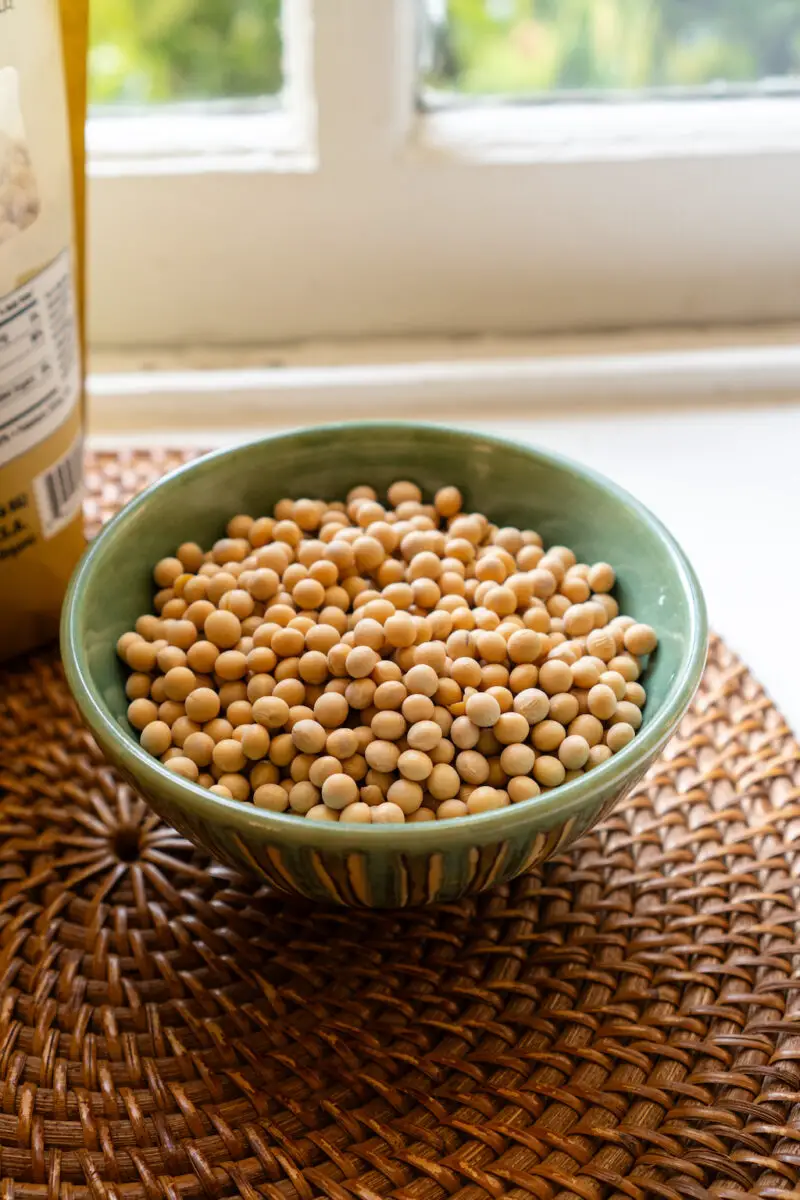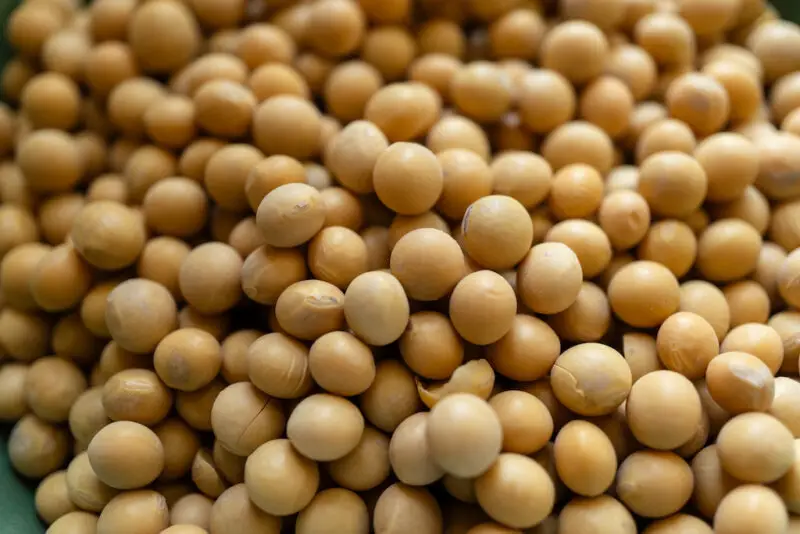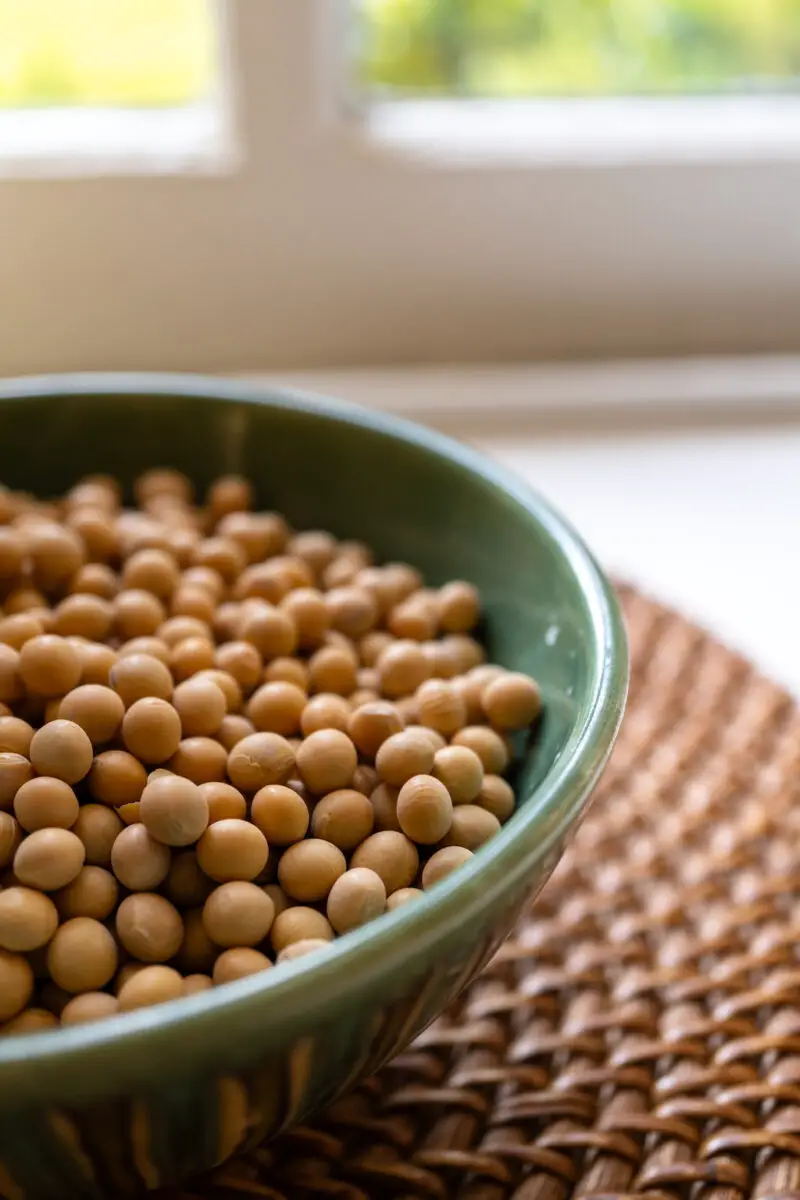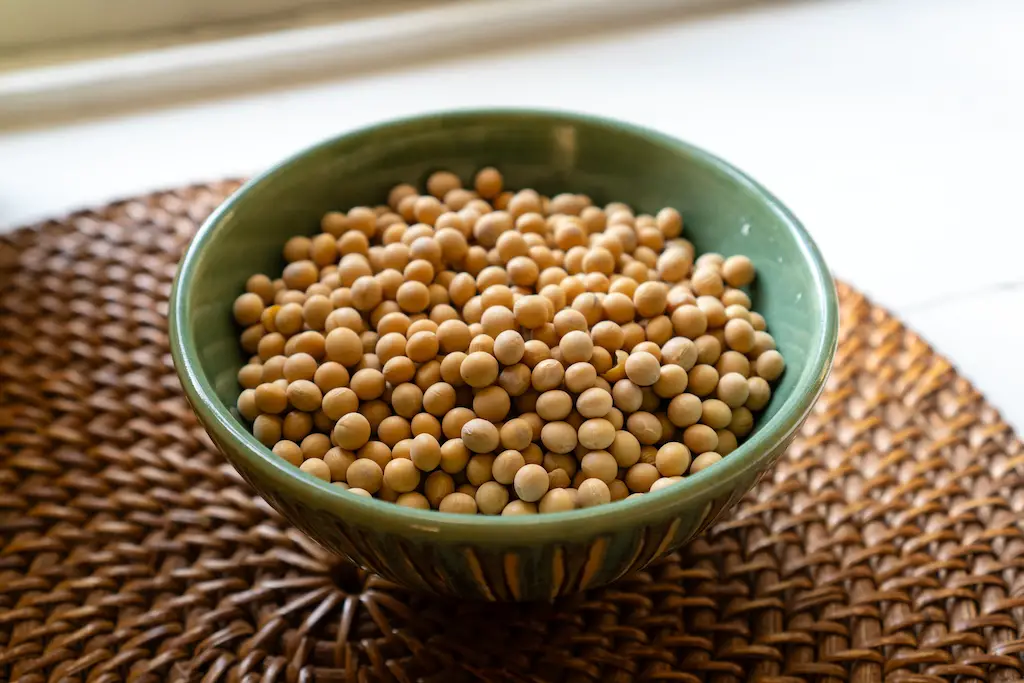This post may contain affiliate links. Please read my disclosure for details at the bottom of this page. As an Amazon Associate, I earn from qualifying purchases on this article about mejukong, otherwise known as soybeans. I hope you enjoy learning about this ingredient!
Published 09/12/2023 Updated 05/08/2025
What Are Soybeans?
The soybean (or soya bean) is a species of legume native to most of East Asia. In South Korea, people have used and cooked with this ingredient going back at least 4,000 years.
There are two types of soybeans used in Korean cuisine: yellow and black.
- Yellow Soybeans: In Korean, yellow soybeans are known as ‘mejukong’ (메주콩), otherwise known as ‘baektae’ (백태). These soybeans are the variety used to make soy sauce, fermented soybean paste, tofu, and more.
- Black Soybeans: In Korean, black soybeans are known as ‘heuktae’ (흑태). People use these soybeans in cooking and to make soymilk. This variety is not used to make soy sauce and other fermented ingredients.

Soybeans in Korean Cuisine:
Once again, people in Korea refer to yellow soybeans as ‘mejukong’ (메주콩). Let’s learn some common ways people use this ingredient in Korean cuisine
Some Examples of Mejukong in Dishes Include:
- Doenjang (된장): In English, we can refer to this Korean fermented ingredient as Korean soybean paste. People use this paste in stews, vegetable dishes, and more. Learn more about this ingredient via my article on the subject!
- Guk Ganjang (국간장): Known as Korean soup soy sauce in English, this ingredient is a by-product of making doenjang! In Korea, people use soup soy sauce to flavor soups and stews. Learn more about this ingredient via my article on the subject!
- Ganjang (간장): While ‘guk ganjang’ is soup soy sauce, ‘ganjang’ is just regular soy sauce. In Korea, people use this ingredient to help season most seasoned and marinated dishes (such as bulgogi.)
- Dubu (두부): Dubu is the Korean word for ‘tofu!’ This vegetarian and vegan protein dish is a staple in all of East Asia. In Korea, people eat tofu braised, fried, baked, and more.

Soybean Frequently Asked Questions:
Now that we learned about soybeans in Korean cooking, I want to answer some questions you may have about this ingredient as well! If I do not answer your question, feel free to leave a comment in the section below or email me at [email protected].
What Do Soybeans Taste Like?
Soybeans have a naturally light grassy flavor when raw. Once cooked, this flavor deepens so it doesn’t taste nearly as green.
Where Can I Buy This Ingredient?
Surprisingly, it can be difficult to find dried soybeans at your typical well-stocked Western grocery store in the United States. Instead, try shopping at your local health food store, Asian market, or Korean grocery.
If you do not live near an Asian grocery store, you can easily find this ingredient for sale online!
Where to Buy Korean Ingredients Online?
Nowadays, there are many online options to choose from to order Korean food online. These websites are not limited to but include:
- Amazon
- H-mart
- Hanpoom
- Wooltari
How Do I Properly Store This Ingredient?
To store dried tofu beans, place them in an airtight container and keep them in a cool, dark place like a pantry. Once you rehydrate the beans, place them in the refrigerator if you are not going to cook with them right away.
What Is a Good Soybean Substitute?
Unfortunately, there isn’t a good substitute for soybeans when making soy sauce, tofu, and more.
Instead, you can learn how to make other types of similar products using different ingredients! For example, you can make a tofu-like product known as Burmese tofu. This product uses chickpeas rather than soybeans. Having these soy-free alternatives on the market is also important for those with soy allergies!

I Hope You Enjoyed Learning About Mejukong in Korean Cooking!
In the end, I hope you enjoyed learning about the uses of mejukong in Korean cuisine. If so, let me know in the comment section!
If you would like to read more about cooking, you can find recipes as well as further Korean ingredient articles on my blog. I listed some of our favorite Carving A Journey recipes below! For reference, many recipes are influenced by my family’s blended Korean and Southern heritage.
Korean Ingredient Articles:
Further Carving A Journey Recipes:
If you have any questions or comments, you can also email me at [email protected]. And, finally, I would love to hear from you through our social media as well! You can follow me at @carvingajourney on Instagram, Facebook, and Pinterest. Or, if you would like more articles like these, you can subscribe to the blog by joining the mailing list. Let me know if you try cooking with soybeans! Thank you so much for stopping by!
Carving A Journey is a participant in the Amazon Services LLC Associates Program, an affiliate advertising program designed to provide a means for sites to earn advertising fees by advertising and linking to Amazon.com. Although we may earn commissions for our endorsement, recommendation, testimonial, and/or link to any products or services from this website, these opinions are my own and I fully support these products.

